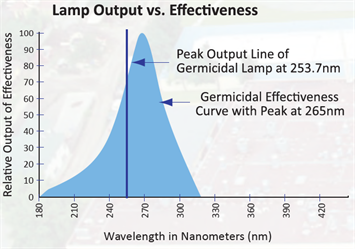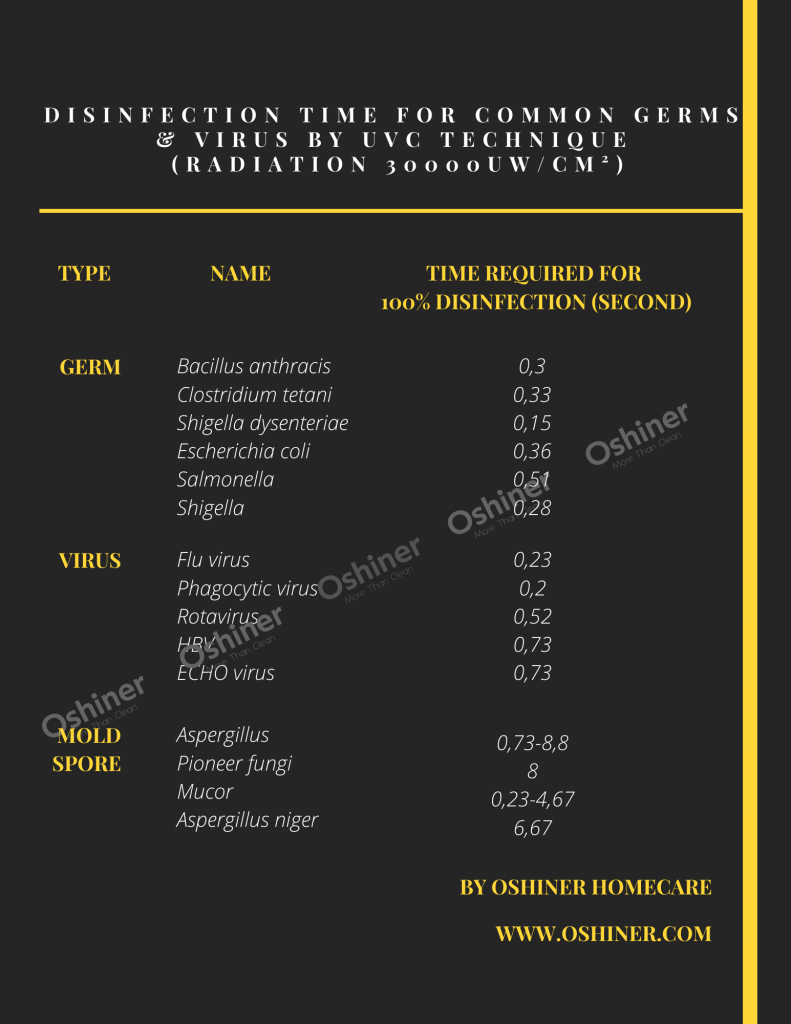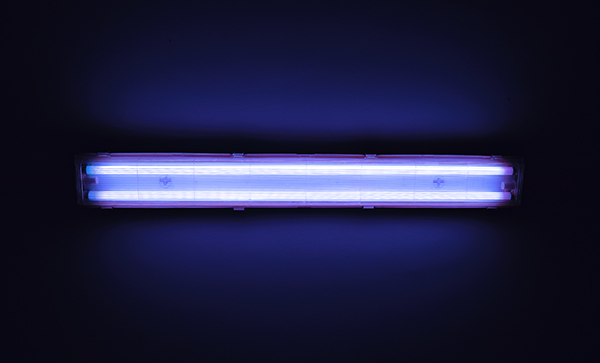Have you once questioned before?
In fact, there’re many factors, like bacteria types, ambient temperature, humidity etc. Firstly, you shall check the UV wavelength. Not all UV light can be used as sterilizer. UVA & UVB cannot disinfect anything. UVC lamp are widely used to do disinfection, the wavelength is from 200nm to 280nm, at peak of 265nm.

UV sterilization is most determined by two parameters:
1. The sterilizing dose = The radiation intensity of UV light (μW/cm²) x exposure time (seconds);
2. Type of bacteria and the environment.
Normally a new 30W UV lamp has a radiation intensity of 90-100μW/cm² at a distance of 1m. If we take Escherichia coli for example, according to International Standard, the sterilizaing dose shall reach to 20,000 μW/cm² . So the exposure time is 20,000 μW/cm² ÷ 100 μW/cm² = 200 s (seconds), which is about 3 minutes and 20 seconds. The higher radiation intesity the shorter exposure time the lamp disinfect.
As you don’t know the types of germs and the disinfection standard, it’s better to do sterilization for a long period of time. Still for 30 w lamp, commonly the time shall be 30 minutes or longer.
Here’s the conception of disinfection time for reference:

Notes: Prolonged UV exposure causes certain damage to the stuff, like speeding up the plastic ageing, so the exposure time shall not be for too long.
Cautions: Remember to do protection when using UVC light. It would cause harm to eyes and skin. Gloves and goggles are essential.
By the way, UV light is not effective against mites!






